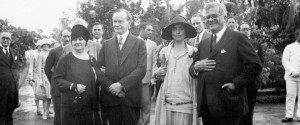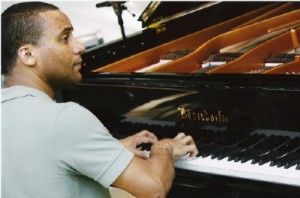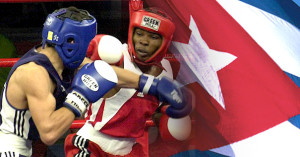
Rebuilding relations: Cultural capillarity
HAVANA — Some codifiers of anniversaries have already consecrated Dec. 17, 2014 as a key reference to mark the reestablishment of normal ties between the United States and Cuba.
I prefer them to those who prioritize diplomatic formalization because the date — when Barack Obama and Raúl Castro made simultaneous statements — marks the start of the process. Especially noteworthy is Obama’s statement, for its express recognition of the failure of Washington’s policy and his willingness to change it. Though the statement had some ifs and buts, it did not raise prior conditions that Cuba might not have accepted.
I think that, from that moment on, none of the steps taken (and some steps have been taken, though the essentials remain undone) have been as significant as President Obama’s visit to the island March 21-22 will be. Since the announcement was made, it has been recalled that he is the second White House resident to do so, the first being Calvin Coolidge in 1928, during the peak of the Machado presidency.
In no way do I consider the two events comparable. To Cubans, the Coolidge visit was an event best forgotten because of its insignificance.

This time, the leader of the top world power will bring an olive branch to the country that managed to resist more than half a century of open hostility after freeing itself from U.S. tutelage. In exchange, he has a guarantee that he will be welcomed unreservedly. This is an unprecedented event for the two countries, and not only for the presidents who take credit for it.
These days, a broad panoply of considerations to this effect has been revealed, and we’ll have to pay attention to the unfolding of the visit itself and its inevitable repercussions. I think that this might be the moment for a strategic-balance confrontation over what can be achieved effectively in acceptable terms, a project of actions for the period of time remaining in Obama’s final term.
The definition of the terrain on which this historic moment will take place has many tributaries, and I hope to focus the reader’s attention on one that does not always get proper attention. I refer to the communication vessels that define the cultural relation between the two countries, vessels that affect everything and are as intense in their proximities as rough in their frictions.
The panorama of culture expresses in its highest degree the contradiction between the situation of a country that’s fully Latin American while simultaneously greatly touched by the capillarity imposed by its proximity to the United States. All the determinations implied in the doctrine of the ripe fruit, the ravings of annexation, the belated and difficult achievement of the ideal of independence, the frustration engendered by a republican order held back by dependence.
I couldn’t say if transculturation is a stew, as [Cuban anthropologist] Fernando Ortiz rightly described it, or, in this different dimension, a turbulent whirlpool if you add the ingredients that the wise man preferred to leave out of the pot to keep its contents digestible, ingredients that he knew full well.
No one can overlook the artistic manifestations in U.S. music and dance where the closeness and presence of Cuban roots are most clearly perceived, or the influence of the blues and other Afro-American genres on Cuban music. A two-way capillary connection exists between both cultures.
Many Cuban names have made a career in the United States, such as Chano Pozo, Dámaso Pérez Prado, Celia Cruz and many others, even those who saw such communication hindered by distance, rupture and the blockade. Felipe Dulzaides and Chucho Valdés paid great honor to jazz.

I recall that, in Paris in the mid-1980s, Dizzie Gillespie insisted that he could only be accompanied on the piano by Gonzalo Rubalcaba. Gonzalo was able to travel and played with Gillespie.
Bola de Nieve appeared successfully in Carnegie Hall in 1939. When it comes to dance and classical music, I should point out that in 1957 the monumental Encyclopedia Americana acknowledged the acclaim that Alicia Alonso earned from the American public. Miguel Antonio (Ñikito) Pinto, an eminent Cuban pianist who died in 2006, was associate director of the New York Philharmonic. And these are just a couple of references from a list of names that would fill volumes.
Also, we shouldn’t forget that one of George Gershwin’s final compositions was his Cuban Overture (1932). These are not fortuitous coincidences or exceptional geniuses — which do exist — but a more complex imbrication of roots that is not limited to artistic creation.
I’ve always believed that the spirit of independence germinated in Cuban ideology thanks to Félix Varela, who lived most of his adult years between the 1820s and the 1850s as an exile in New York City, where he produced many of his political tracts. And it came to a peak thanks to José Martí, who, from the mid-1870s until his death in combat in 1895, also lived in New York City.
There, Martí was able to learn the virtues of U.S. society and criticize its defects; to admire Emerson, Longfellow, Whitman and other notables in U.S. literature and thought. He was able to collaborate with Charles Anderson Dana in the newspaper he edited and suffer the obstacles raised to the preparation of the war of 1895, such as the boycott to the expedition of La Fernandina. Meetings and partings in thoughts and actions.
Cuban architecture in the first half of the 20th Century is eloquent. The Havana Capitol represents an unequivocal sign of the degree to which its designers thought about Washington. Similarly, the America Building and its theater were inspired by Rockefeller Center and the Music Hall. Neither was perceived as a copy but accepted as a tasteful original, on occasion with certain pride.
The U.S.-owned sugar mills were built according to the Americans’ specifications, and in the 1950s residential architecture for middle- and high-class residents was basically guided by California standards.
Toward the late 1950s, I visited a La Corona cigar factory near Trenton, N.J., where the workers skillfully rolled tobacco leaves imported from Vuelta Abajo. The tobacco aroma made me feel the presence of Cuba.
We know that, next to music, the cinema is the farthest-reaching expression of art, 20th-Century art. In Cuba, the preference for American rather than European movies has been unquestionable and U.S. films always competed advantageously with Mexican cinema, despite the language and other strong proximities on the cultural level with Mexico, which may be considered the closest Latin American country to us. The preference has remained, to the point that English-language movies are subtitled rather than dubbed, a technique much appreciated elsewhere.
When it comes to sports, except for U.S. football and winter sports, the range of Cuban sports begins with baseball and follows other U.S. preferences, such as boxing, basketball and volleyball. But “the ball,” as we call it, a term impossible to decipher with Spanish codes, is almost a way of thinking, and a play can become the source of an interminable discussion.
Personally, in the spontaneous practice of restoring U.S. cars in the 1960s I see an unexplored contribution to the cultural scene, required by the connection of a normal relation between both societies.
This landscape could become a lot more explicit — and I doubt that it won’t — but the list shown here is enough to conclude that, paradoxically, the measure of Cubanness after half a century of the blockade is much greater than the image extracted from a normalcy based on pre-1959 reality. Cuba then was an item practically absent from Americans’ imagination, for which it did not represent a defined interest. Today, that image has acquired a new dimension, and a closer look by both parties could change many things.
In the years to come, we foresee transformations in Cuba’s civil society. This is not an audacious prediction. There will be real challenges at many levels, including the cultural level. While the initiative and the change in strategies and policies leading to normalcy are basically up to Washington, the full weight of the social and economic effects falls — as is obvious — upon Cuban society. Consequently, so does the weight of the challenge.
Beyond playing baseball together, dancing here and there to the music of similar orchestras, enjoying songs composed on both shores, and sharing (or not) culinary tastes, cultural relations include deeply acquired social habits, a political culture and a style of living, the feelings and actions of a community and the family. Therein will lie the challenges that begin to emerge.
Aurelio Alonso, associate editor of the magazine House of the Americas, was the winner of the 2013 National Award for Social Sciences. He has published numerous books and articles of national importance. He was one of the founders of the important magazine Critical Thought, no longer published.


